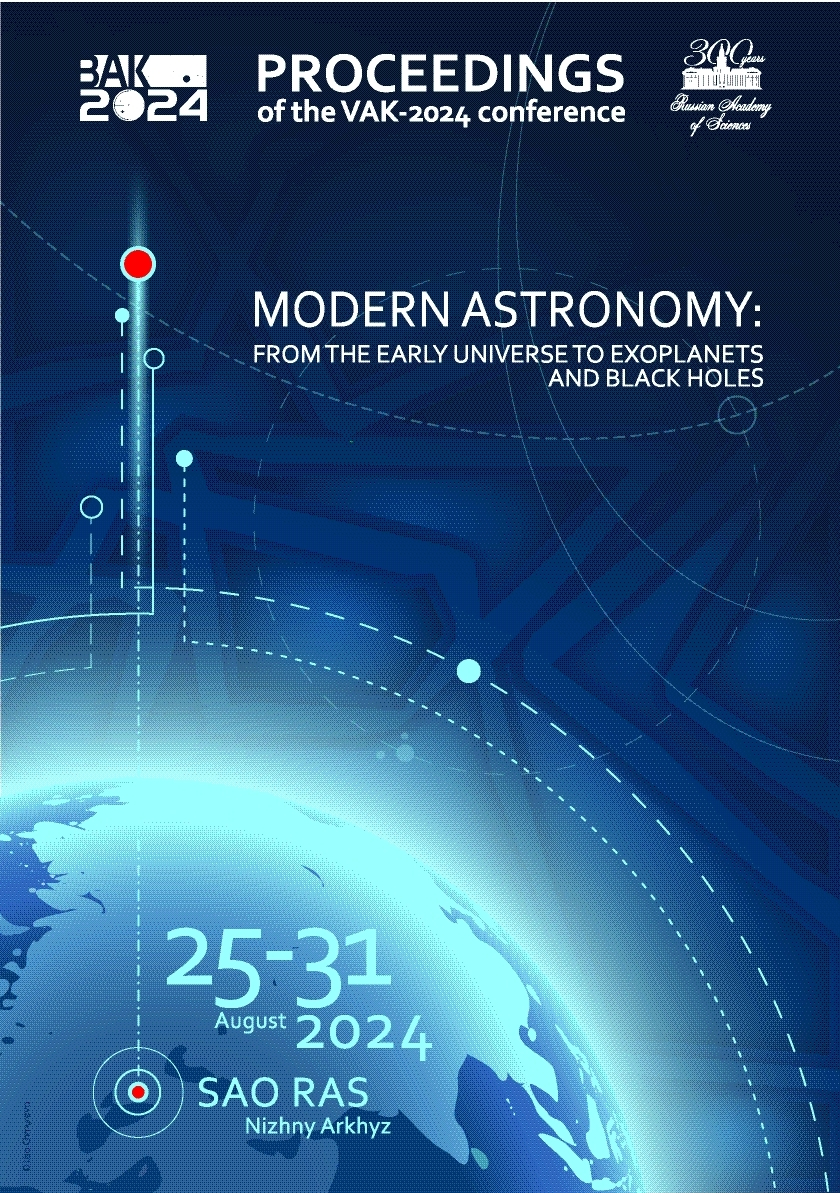National Research Lobachevsky State University of Nizhny Novgorod
UDC 53
UDC 520
UDC 521
UDC 523
UDC 524
UDC 52-1
UDC 52-6
CSCSTI 41.00
CSCSTI 29.35
CSCSTI 29.31
CSCSTI 29.33
CSCSTI 29.27
CSCSTI 29.05
Russian Classification of Professions by Education 03.06.01
Russian Classification of Professions by Education 03.05.01
Russian Classification of Professions by Education 03.04.03
Russian Library and Bibliographic Classification 2
Russian Library and Bibliographic Classification 223
Russian Trade and Bibliographic Classification 614
Russian Trade and Bibliographic Classification 6135
BISAC SCI004000 Astronomy
BISAC SCI005000 Physics / Astrophysics
Massive stars play an important role in the Universe. Unlike low-mass stars, the formation of these objects located at great distances is still unclear. It is expected to be governed by some combination of self-gravity, turbulence, and magnetic fields. Our aim is to study the chemical and physical conditions of dense clumps in several high-mass star-forming regions. We performed observations towards 5 high-mass star-forming regions (L1287, S187, S231, DR 21(OH), NGC 7538) with the IRAM 30-m telescope. We covered the 2-3 and 4 mm wavelength bands and analysed the lines of HCN, HNC, HCO$^+$, HC$_3$N, HNCO, OCS, CS, SiO, SO$_2$, and SO. Using the astrodendro algorithm on the 850 $\mu$m dust emission data from the SCUBA Legacy catalogue, we identified dense gas clumps and assessed their masses, H$_2$ column densities, and sizes. Furthermore, the kinetic temperatures, molecular abundances and dynamical state were obtained. The Red Midcourse Space Experiment Source survey (RMS) was utilized to identify the types of clumps. A total of 20 clumps were identified. We found no significant correlation between line width and size, but the linewidth-mass and mass-size relationships are strongly correlated. Virial analysis indicated that the clumps with H II regions and young stellar objects (YSOs) are gravitationally bound. Furthermore, it was suggested that significant magnetic fields provide additional support for clump stability. Molecular abundances show a decreasing trend from YSOs to submm and H II regions.
ISM: abundances, molecules; stars: formation, massive; astrochemistry
1. Bertoldi F. and McKee C.F., 1992, Astrophysical Journal, 395, p. 140
2. Di Francesco J., Johnstone D., Kirk H., et al., 2008, Astrophysical Journal Supplement Series, 175, 1, p. 277
3. Gerner T., Beuther H., Semenov D., et al., 2014, Astronomy & Astrophysics, 563, id. A97
4. Kauffmann J., Bertoldi F., Bourke T.L., et al., 2008, Astronomy & Astrophysics, 487, 3, p. 993
5. Kauffmann J., Pillai T., Goldsmith P.F., 2013, Astrophysical Journal, 779, 2, p. 185
6. Ladeyschikov D.A., Bayandina O.S., Sobolev A.M., 2019, Astronomical Journal, 158, 6, p. 233
7. Larson R.B., 1981, Monthly Notices of the Royal Astronomical Society, 194, p. 809
8. Lumsden S.L., Hoare M.G., Urquhart J.S., et al., 2013, Astrophysical Journal Supplement, 208, 1, id. 11
9. Ossenkopf V. and Henning T., 1994, Astronomy & Astrophysics, 291, p. 943
10. Pazukhin A.G., Zinchenko I.I., Trofimova E.A., et al., 2023, Monthly Notices of the Royal Astronomical Society, 526, 3, p. 3673
11. Rosolowsky E.W., Pineda J.E., Kauffmann J., et al., 2008, Astrophysical Journal, 679, 2, p. 1338
12. Yu N. and Xu J., 2016, Astrophysical Journal, 833, 2, id. 248
13. Zinnecker H. and Yorke H.W., 2007, Annual Review of Astronomy & Astrophysics, 45, 1, p. 481





